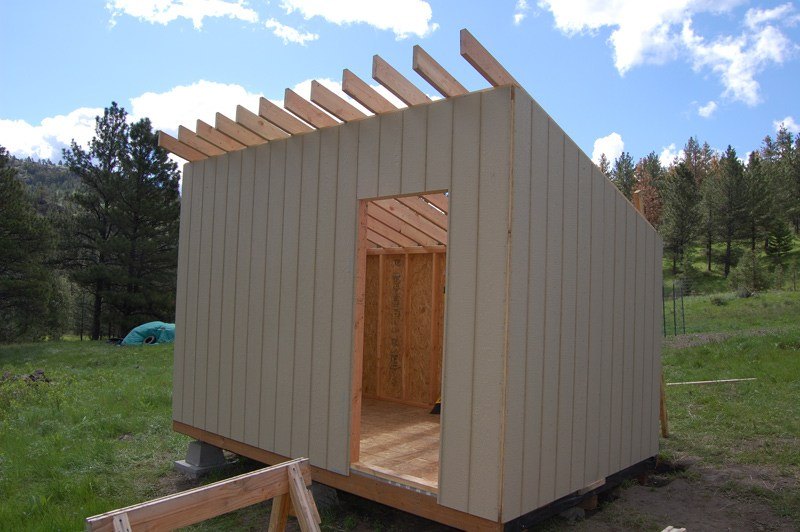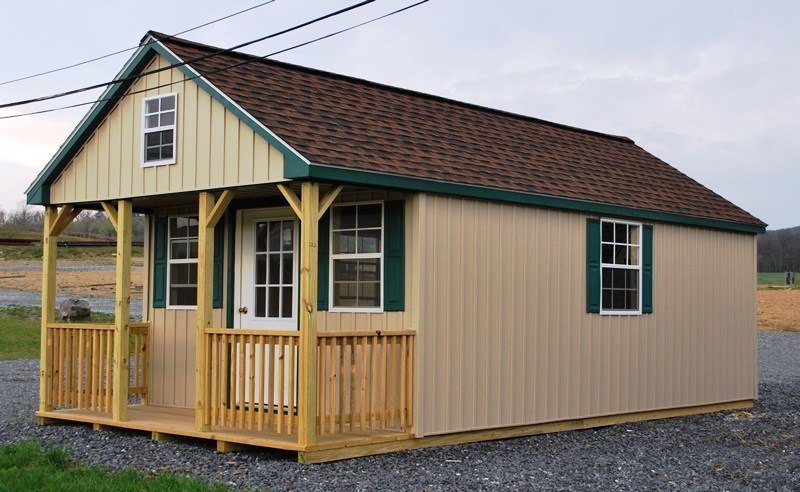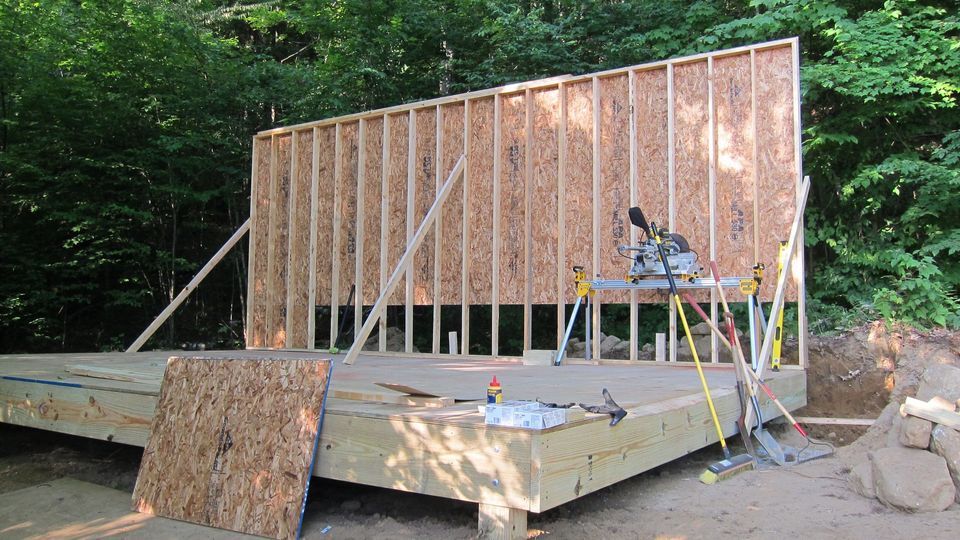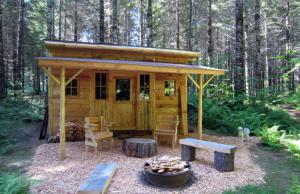
In Part 1 of Introduction to Building a Storage Shed we considered why as a Prepper or survivalist you might want to build a shed, and gave some options and preliminary decisions to make and checking out to do. In this part, we will look at some other things to consider before you install your storage shed. And some general lessons learned to keep in mind through the process.
Storage Shed Kit Sources
Doing an online search seems to be an effective method. Doing a search for “shed kit” on eBay gave me an idea of what was available. Searching for the top brands found companies specializing in shed kits such as ShedsForLess.com. Once I found the make and model I was looking for, more specific searches found the best price. Prices seem fairly universal, although I did happen to find a sale on my choice. A local source may be cheaper since delivery can be handled in house, but will be increased by sales tax, so the total price should be compared with companies which have to include freight in the cost but don’t have to charge tax. It seems that shipping is usually “free” (more accurately, included in the cost) on some of the major brands.
Keep in mind that the floor is usually not part of the kit, although often can be ordered with the kit. Often it is delivered first, from a local source, which means the quality might not be optimal. On mine, most of the joists could be forced into place, but I had one beam which was warped at a knot, and attempting to force it straight caused the beam to snap. Replacing it was not trivial, since the only receipt I had was the shipping order, and it took a long time for the local store to find it in their system, since it did not have my name on it or even the name of the company I ordered from. It was under the name of the kit manufacturer.
There are kits which are material only, and those which are pre-cut. The latter is easier to assemble and requires less equipment.
Also, when pricing a (wood) kit, keep in mind that hardware is often included, but paint and roofing are usually not, and these products are not cheap. I could not believe they get over $30 a gallon for paint these days; fortunately Ace had a buy one gallon, get one gallon free sale. For most (wood) sheds, the specified roofing is shingles, and those run about $1 a square foot. Flooring, roofing and paint was about 1/4 of the total cost of my kit, and that did not include the roofing gun and scaffolding which will be used for other projects as well.
Options
Often a kit company will offer “options” such as additional or different doors, windows, a ramp, shelving/cabinets and various ventilation methods. If offered by the kit company you pretty much have to order it with the kit. Ventilation is good to prevent heat build-up; a “ridge vent” methodology is probably the best, but usually not available with the kit. If you are going to use the shed strictly for storage, then windows would seem to be pretty silly since you lose wall space and reduce the security. However, if you are going to be spending much time in there, a window or two will be quite helpful for light, ventilation and to reduce claustrophobia.
What to Have on Hand
The first thing to attempt to arrange is other people. There are a couple of aspects of building the shed which will be very difficult for a single person to accomplish, without using “tricks” which need to be purchased or constructed. More people not only allow completing these aspects in a “normal” manner, but will make things quicker and perhaps even “more fun”. After all, if a single person needs to drive 1000 nails, two people only need to drive 500 each, and so on. Plus, don’t discount the motivation having others involved provides. If you can arrange for a person or group to help, that should be great. If you don’t have people available or that you trust, it does not mean you are out of luck, just that you will need to approach the project differently.
There are certain basic tools you will need. For a pre-cut wood building, that will be a hammer, drill (primarily for driving screws), tape measure (25′ may be adequate for medium sized buildings), level, framing square, carpenter’s pencil and a circular saw. Having a cut-off saw was nice (more ergonomic and precise), but is not really needed by the pre-cut kit; the square and circular saw will suffice since there are not that many cuts left to be made. A panel saw would have been handy, but for the one cut needed for the floor of my kit, a long straight edge, a pair of clamps, and the circular saw did just fine. And you will need a ladder or two. And, of course, don’t forget safety glasses and work gloves. Plus arrange for the equipment for your preferred painting methodology.
Remember those 1000 nails? I’ve used a nail gun for construction and it is very helpful indeed. However, since the kit came with all the correct nails, I did not bother getting the pneumatic equivalents. However, roofing nails were NOT included, and roofing is enough of a pain; I got a roofing nail gun and the nails for it. Some kits say that “felt” under the shingles is “optional”. I disagree. Not only does it provide protection from a small leak in the shingles, but it protects the shingles from the roof panels and vice versa. For the felt, you will need a hammer stapler and staples (no, a pneumatic stapler won’t do; it goes right through the felt, and your hands will hate you if you try using a standard squeeze stapler). For the shingles, a utility knife and a bunch of hook blades for it, and a pair of tin snips (for the edging). Be sure the hook blades fit your utility knife; my knife had a couple of extra pins which match up holes only in the same brand’s (much more expensive) blades.
This list assumes that everything goes perfectly, which it sometimes does not. For instance, if there is a warped or twisted board, it can often be forced into position using a pipe wrench. Or a twisted beam can be encouraged to stay in place with a long bolt and nut, tightened with a wrench and socket wrench. Some places get rain, and getting raw wood wet is not wise. A tarp big enough to completely cover the roof (and bungee cords to fasten it down with) can be a great help. Things sometimes don’t fit quite right; I found a package of composite (not wood) shims (from Timberwolf) to be of great help in these cases. If you end up with a crack or hole that insects can get through, some spray foam like “Great Stuff” can help. Although roofing CAN be done with ladders, it is a tedious, slightly more dangerous process. Buying or renting scaffolding can make it go quicker and is a bit safer to boot. Of course, it might be easier and not much more expensive just to hire someone to do the roofing.
I used several other tools which I had on hand, to overcome problems and make “enhancements” to the shed. These should not be normally needed.
Caveats
It is tempting to just order the kit and work on the site when the floor kit arrives. This can be problematical; it took me over a month to get the floor flat and level (since the ground was very much neither). Yet, the shed kit arrived only a few days after the floor kit. Be aware of what the relative weather is between the source and your location. My kit came from Pennsylvania when it was cold and wet, and arrived in Arizona where it was warm and dry, and sat in that wildly different environment for over a month. It is not surprising that I had more warping and twisting than expected. Two lessons learned. Prepare site before ordering, and be aware of relative weather between source and destination.
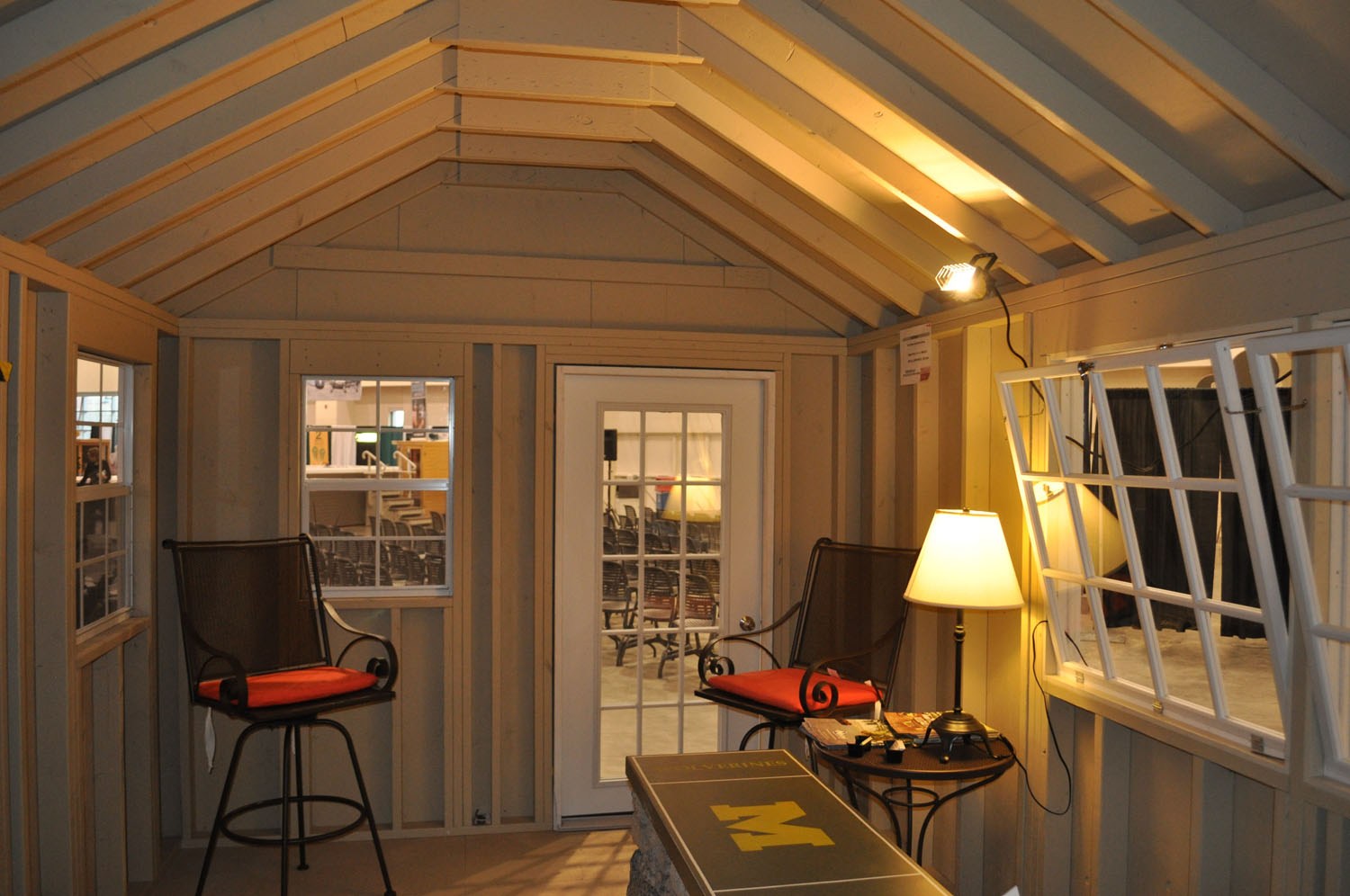
The floor kit is often delivered by a local lumber outfit, who may have a trailer and fork-lift, and can put the pile in a relatively out of the way location. The shed kit may be shipped by a standard shipper who has nothing other than pallet jacks to move things around with. Pallet jacks require a smooth, solid surface, so they had to leave my kit in the road and I had to quickly and manually move it into my pickup. The total kit weight is a bit over a ton, so to move it from curb to site will take more than one trip with a “1/2 ton” pickup. When you get to the site, have something for the materials to sit on to keep them off the ground, sort the parts by size, and then stack them with the last needed pieces on the bottom and the first needed pieces on top. I had two stacks, one of boards and one of sheets. Cover with tarps if precipitation is expected.
Find the inventory list before you start unpacking and use it to verify the contents as you unpack. I did a manual inventory, and matching it with the official one I found later was a bit of a challenge, since my descriptions did not match theirs. There were a couple of pieces missing and a couple which were unusable; a call to the company got replacements sent right out. Read the manual from cover to cover before you start, then follow it “exactly” (except for any typos) unless you are doing the build by yourself.
It was annoying that the 16′ shed floor kit came with 8′ runners; it was a challenge to keep them together and straight; I eventually gave up and used “StrongTie” connectors to hold them together end-to-end.
Standard felt is very easily torn. It usually takes two people to install, and after we got one side up and took a break; the wind, more accurately a gentle breeze, ripped most of it off. I finally had success with double thickness felt which is somewhat stronger, a “tool” I built which allowed me to put it up by myself, and putting on the edging as quickly as possible to prevent wind from getting under the felt edges. Yes, you need more rolls (being thicker, there is less length in each roll), but in climates such as ours, you generally put on two layers of standard felt anyway.
How to start
The first step is to figure out everything you want to accomplish with your shed, then find out any limitations on what you are “allowed” to put up and where you want to put it. This includes finding out what is required by building codes. Make sure you have plans for any alterations to be made to the shed; find the materials and figure out when in the build process you will need to diverge from the standard instructions. Next, find the model or models of kits which you like, and get an idea of the pricing. Arrange financing (cash or credit), prepare the site (marking and leveling for wood, forms. rebar and pouring for concrete), then order the kit. Find out when it will be delivered and arrange to be available, with a truck or two to move the parts from where they deposit them to the construction site, and preferably people to help to load and unload.


